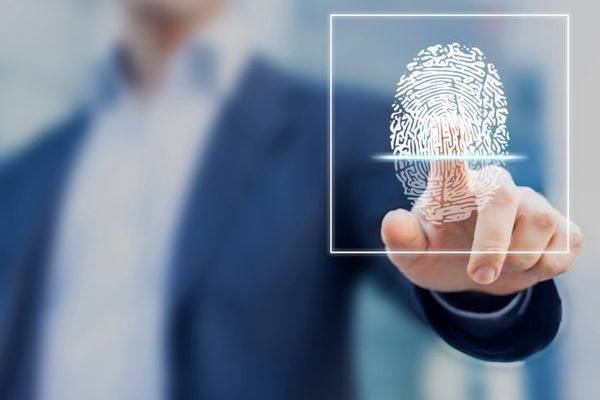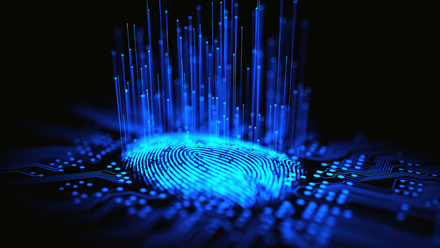The Crucial Importance of Genuine Identity Onboarding In Digital ID Wallets
Identity proofing is evolving beyond physical documents. Digital ID wallets are emerging as a convenient and secure way to store and manage our identities. As these systems become more prevalent, ensuring the authenticity of the identities being onboarded has never been more critical.
This blog explores why genuine identity verification (IDV) is paramount in the coming age of digital ID wallets, particularly in light of emerging security threats.
The rise of generative AI: A double-edged sword
Artificial Intelligence (AI) has made remarkable strides, with generative AI (GenAI) capabilities reaching unprecedented levels of sophistication. While this technology offers immense potential for innovation, it also presents significant challenges in IDV.
GenAI has dramatically lowered the barrier to entry for creating convincing fake identities. This democratisation of fraud capabilities poses a serious threat to unsophisticated digital identity systems.
Consider the following scenarios:
- Synthetic identities: AI can generate realistic personal information, including names, addresses, and even entire backstories.
- Deepfake technology: AI-powered deepfakes can create hyper-realistic images and videos, potentially fooling less sophisticated biometric systems.
- AI-generated documents: Fake identification documents, utility bills, and other supporting materials can be created with a level of authenticity that was previously unattainable for most fraudsters.
The implications are clear: as generative AI becomes more accessible and powerful, the risk of fraudulent identities infiltrating digital ID ecosystems increases exponentially.
The challenge of synthetic media
Deepfakes and other forms of synthetic media present a formidable challenge to traditional identity verification methods. These AI-generated images, videos, and audio can be incredibly realistic, potentially fooling both human reviewers and conventional automated systems.
As such, onboarding processes for digital ID wallets must incorporate sophisticated detection mechanisms to ensure the authenticity of submitted identity proofs.
Multi-layered detection approach
Effective deepfake and synthetic media detection typically involves a multi-layered approach:
- AI-powered analysis: Advanced machine learning (ML) algorithms can analyse submitted images and videos for telltale signs of manipulation or generation.
- Forensic analysis: Digital forensic techniques can examine the metadata and underlying structure of submitted files to identify anomalies indicative of synthetic generation or manipulation.
- Behavioural analysis: By analysing patterns in how identity information is submitted and used, systems can flag suspicious activities that may indicate the use of synthetic identities.
- Liveness detection: Advanced liveness checks can help ensure that the person submitting identity information is physically present, rather than using pre-recorded or generated media.
The ripple effect: The impact of a single fraudulent digital ID
The potential damage caused by even a single fraudulent identity successfully entering a digital ID ecosystem is alarming. Unlike physical identity documents, which are typically used in isolated instances, a digital ID can potentially interact with numerous systems and services simultaneously.
Let's examine the far-reaching consequences:
- Financial fraud: A fraudulent digital ID could be used to open bank accounts, apply for loans, or engage in money laundering activities across multiple institutions simultaneously.
- Access to sensitive information: Depending on the level of trust placed in the digital ID system, a fake identity could gain unauthorised access to government services, healthcare records, or other sensitive data.
- Identity theft at scale: Once established, a fraudulent digital identity could be used to impersonate the supposed individual across various platforms and services.
- Undermining trust in the system: The discovery of even one fraudulent identity within a digital ID ecosystem can erode public trust in the entire system.
- National security risks: In extreme cases, fraudulent digital identities could be leveraged for espionage, terrorism, or other activities that threaten national security.
The interconnected nature of digital systems means that the damage from a single compromised identity can spread quickly and widely.
The role of facial biometrics in ongoing IDV
While robust initial onboarding is crucial, the dynamic nature of digital identities necessitates continuous verification. This is where facial biometrics play a vital role in ensuring the ongoing authenticity of digital IDs.
Facial recognition technology offers several advantages in the context of digital ID wallets:
- User-friendly verification: Facial biometrics provide a quick and non-intrusive way for users to prove their identity.
- Liveness detection: Advanced facial recognition systems can incorporate liveness detection features, which help distinguish between a real person and a static image or video.
- Continuous authentication: Facial biometrics can be used for periodic reauthentication, ensuring that the digital ID is still being used by its rightful owner.
- Multi-factor authentication (MFA): When combined with other authentication methods, facial recognition adds an extra layer of security to digital ID systems.
Implementing facial biometric checks at critical junctures can significantly mitigate the risk of fraudulent use of digital IDs.
Challenges & considerations
While the importance of genuine identity onboarding and ongoing verification is clear, several challenges must be addressed:
- Privacy concerns: The collection and storage of biometric data raise important privacy issues that must be carefully managed.
- Inclusivity: Facial recognition systems must be designed to work accurately across diverse populations, avoiding bias and ensuring equitable access to digital ID systems.
- Technological arms race: As verification technologies improve, so do the methods used by fraudsters. Continuous innovation is necessary to stay ahead of evolving threats.
- Integration & standardisation: For digital ID wallets to be truly effective, there needs to be widespread adoption, interoperability and trust across different systems and jurisdictions.
A call for vigilance & innovation
The advent of digital ID wallets represents a significant step forward in how we manage and use our identities. However, the benefits of this technology can only be fully realised if we can trust in the authenticity of the identities within these systems.
As GenAI and other technologies continue to evolve, the importance of robust identity verification cannot be overstated. The potential damage from fraudulent identities entering digital ID ecosystems is too great to ignore.
Facial biometrics, when implemented thoughtfully and ethically, offer a powerful tool in the ongoing fight against identity fraud. Through the combination of these technologies with other security measures and maintaining a commitment to privacy and inclusivity, we can build digital ID systems that are both secure and user-friendly.
The future of digital identity is promising, but it requires constant vigilance, innovation, and collaboration across technology providers, policymakers, and end-users. Only by working together can we create a digital identity ecosystem that we can truly trust.

Welcome to techUK’s 2024 Digital ID Campaign Week! On the 14-18th Oct, we are excited to explore how our members are increasing efficiency for both businesses and users, combatting fraud, as well as what creative and innovative ways our members are expanding our understanding of Digital Identities.
Whether it’s how we’re communicating, shopping, managing our finances, dating, accessing healthcare or public services, the ability to verify identity has quickly become a critical vanguard to the Digital Economy.
Follow us on LinkedIn and use the hashtag #UnlockingDigitalID to be part of the conversation!









